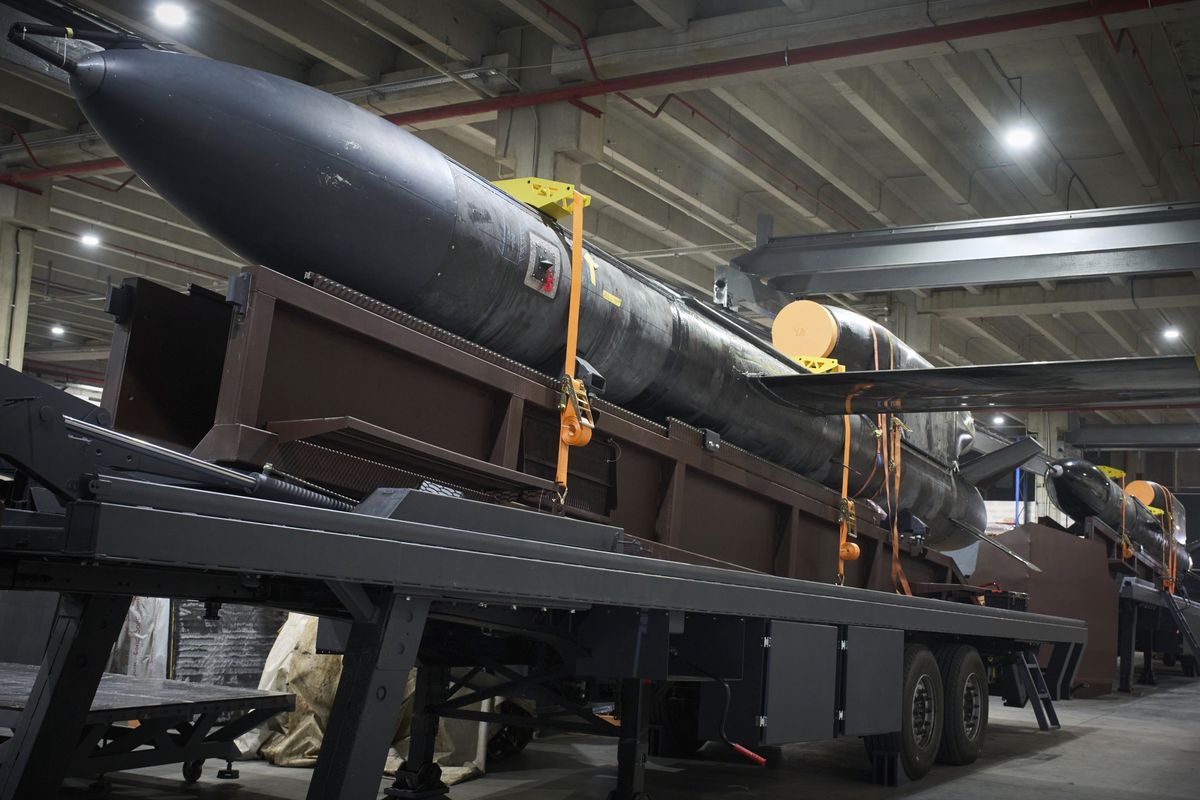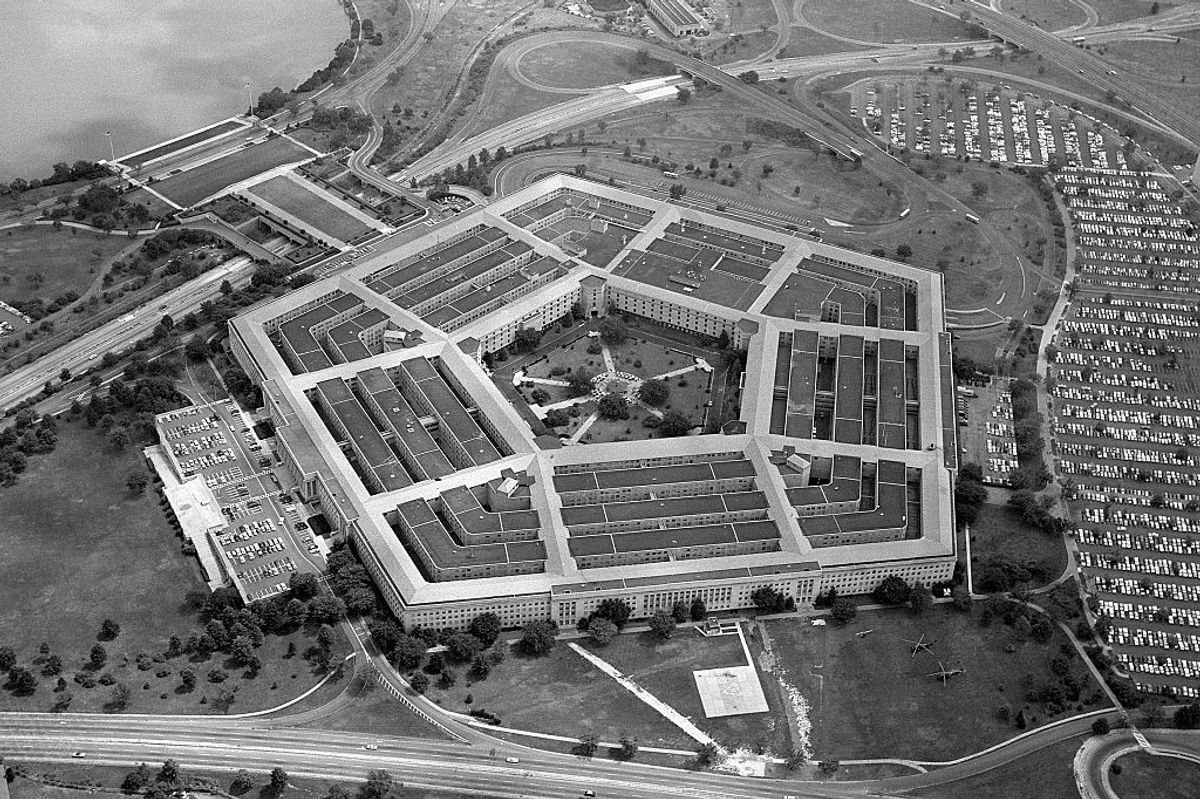EXPERT INTERVIEWS — There is at least one issue involving national security and U.S. manufacturing that enjoys bipartisan support – and at least one Trump administration executive order that hasn’t met much opposition: it involves shipbuilding, and a potentially dangerous problem for the United States.
Put simply, the U.S. isn’t building enough ships – commercial or Navy vessels – and many of the ships it is building are being delivered late and over budget. And as with many issues on the U.S. national security docket, this one lands squarely in the sphere of U.S.-China competition.
Last year the U.S. Navy set a goal of growing its fleet of battle force ships to 381 over the next 30 years; today the figure is below 300, and it’s expected to fall in the short term due to the retirement of older ships. A recent GAO report found that the Navy had failed to increase its fleet size over the previous 20 years, despite a shipbuilding budget that doubled during the same period.
On the commercial side, according to the Center for Strategic and International Studies, the U.S. now builds fewer than 1% of commercial ships globally, while China’s share of global shipbuilding has jumped from 5% in 1999 to roughly 50%.
All this has led to a White House executive order – issued earlier this month – that would create an “Office of Shipbuilding” within the National Security Council. The order aims to expedite “vessel procurement activity,” removing “layers of approval,” and says a key goal is “to better position the United States to address the growing commercial and military dominance of the People’s Republic of China in the maritime domain.” This week, Congress is expected to begin debating a spending bill that would include $33.7 billion for shipbuilding, which Breaking Defense identified as “the big winner” among military items in the proposed budget.
The Cipher Brief spoke with two retired U.S. Rear Admirals about the issue – what it may portend for American military readiness, and how the decline may be reversed. RADM Mike Studeman and RADM Mark Montgomery, both Cipher Brief experts, applauded the latest administration moves but warned that turning the tide of U.S. shipbuilding would be a slow process, and that even in the best-case scenarios, the Navy may be severely challenged before the changes come.
“To think that in single-digit years, you'll suddenly magically create new maritime capabilities – I'm sorry, that's not possible,” RADM Studeman said. “We can do some things, but we can't just turn that aircraft carrier around that quickly.”
Studeman and Montgomery spoke with Cipher Brief managing editor Tom Nagorski. Their interviews have been edited for length and clarity. You can watch both at the Cipher Brief YouTube channel.
THE EXPERTS
The Cipher Brief: The U.S. is by many accounts in need of a real boost to its shipbuilding industry – battleships included. How serious is the problem in your view?
RADM Montgomery: This is a very serious problem. This is a problem 35 years in the making. Since the end of the Cold War, we have taken a significant reduction in our ability to produce two types of shipping.
One is merchant shipping – cargo ships, liquid natural gas (LNG) ships, the ships that supply the oceans with oil, natural gas, and cargo containers. And then warship production. And in each case, it is fantastical, the delta between us and the Chinese; [China is] producing four or five times the number of warships we're producing each year. But in commercial shipping, it's 200 to one. I mean, it's a ludicrous number. We are not constructing ships at anywhere near the rate we need to.
RADM Studeman: There was a repeated refrain in Navy circles for most of my career that America essentially had sea blindness. In other words, they took for granted how important maritime capabilities are to our nation. They proved critical to building up our capabilities and asserting ourselves – protecting trade, essentially being a cornerstone of our security and prosperity. And yet people can't connect the dots back to why you need a strong naval force and strong maritime capabilities.
I would argue that we probably wouldn't have woken up to the realities here if you didn't find that the Chinese, in fact, understood history. They studied it really well. They studied why America became great. And they concluded that they had to be a maritime power, and decided as they opened up in the 1980s that maritime power was essential for them to become great as a nation. And they poured their heart, mind and soul and capital into it. And here's where we are, with the Chinese now having a very formidable, full on maritime capability.
The Cipher Brief: What’s the explanation for the slowdown over the last three decades in terms of American production?
RADM Montgomery: In terms of commercial shipping, you can see it when you compare us to the other really big country besides China – that's [South] Korea. Korea competes with China and competes well. And if I were to build a cargo ship for the U.S. Navy in the United States, and it cost a dollar, in Korea the same ship – delivered, I promise you, on time – would be delivered for about 28 cents. It is a product of the cost of materials, because many of the materials have to be imported into the country. And then the cost of our workforce – our union costs are extremely high, the labor costs at the shipyards versus their equivalents in Korea. And then, the profit margins. So those three things combine to make it very unprofitable for the U.S. Navy to build in the United States. But they generally are constrained by law to do so.
RADM Studeman: In 2018, the Navy put $20-odd billion into their spending to modernize a number of our yards and shipbuilding capability. But what it shows you is that you need to actually put a large amount of investment steadily in, over a long period of time, to really develop something significantly. Shipbuilding companies need to have the reliability that they're going to have a steady supply of funding, beyond one or two years, so they can make those long-term investments in people, workforce infrastructure, et cetera. And we've had such a volatile budget, and they haven't had the predictability and the reliability to make these big bets on shipbuilding for the future. And so they've been hedging and we've been essentially doing the best we can within the limits of the budget. And that's no way to run a railroad, if your strategy is driven by your budget rather than your strategy driven by your strategic priorities.
Experts are gathering at The Cipher Brief’s NatSecEDGE conference June 5-6 in Austin, TX to talk about the future of war. Be a part of the conversation.
RADM Montgomery: With warships, in addition to the problem I mentioned with the cost of labor and such, they have an additional problem: Admirals. What happens is senior officials, usually admirals, but also senior executives, civilian executives, or generals in the Marine Corps, put increased requirements on a ship after you've locked down the design.
And when you do this – well, you stop production. You have to insert what you want. You have to retest it, redo it. And you begin to increase the cost and delay the delivery. Every ship class out there has been delivering late — anywhere from one to three or four years. And they're all delivering over cost. And this is an unacceptable premise that we're running in our warship building. And it's a factor again of labor, parts, profit, and then in the case of warships, executive decision-making.
The Cipher Brief: The Trump executive order recently cited a study done by the Center for Strategic and International Studies, which said that the United States now builds less than 1 % of commercial ships globally. China is now up to about 50%. How did this come to be?
RADM Studeman: You have to distinguish between building warships and commercial maritime ships. On both accounts, the Chinese are going gangbusters and producing more than anybody right now. And so this is the reason why it's such a deep concern. By the way, it's not just big platforms; they are building very creative specialized ships, unmanned systems and sea drones. It's the full gamut, a full family of maritime capabilities.
The Chinese are also doing civilian-military fusion, and so those shipyards that do commercial ships also build warships there, and so you get economies of scale and efficiencies and learning on top of already low labor costs, state support in every way for land, capital, intellectual property, grants and things like that. They've got all the advantages in the world because they set out to make this a very top priority. They identified shipbuilding as a strategic industry in the ‘80s, and they've spent double-digit years just pouring themselves into it. By the time 2010 rolled around, they exceeded Japan and South Korea as the leading shipbuilders on the planet. So they've had 15 years of being the preeminent shipbuilders out there, and they continue to launch a full variety and they will continue to do so. And so our estimation is that by 2030, they'll have 425-odd warships above the 370-odd that they have now. And we're barely around 300.
And so we do need to rethink – and we are – what we're doing, how we're investing and how quickly we're going to make our marks here, because we need as much capability sooner rather than later, given the world that we're living in and given the contingencies that could be on the near horizon.
The Cipher Brief: And in terms of the consequences, there was a Senate Armed Services subcommittee on sea power earlier this month. And there were concerns about warship numbers affecting “success in great-power conflicts.” So I'm assuming that’s all about a potential Pacific war?
RADM Montgomery: This is about the fact that China is the pacing threat for the Navy. When I think about the fight with China, it's about the Air Force and the Navy. It's about air power and maritime power. When you think about Russia and Europe, it's about different types of power – predominantly air and ground with some naval. The Pacific is air and naval with some ground. So yes, it is about China. And we're already playing an away game, of almost 8,000 miles to get there, while they're 80 miles away from the contested space [Taiwan]. So on top of everything else, we have a geographical disadvantage.
Everyone needs a good nightcap. Ours happens to come in the form of a M-F newsletter that provides the best way to unwind while staying up to speed on national security. Sign up today.
The Cipher Brief: What needs to be done? Do you take any heart in the attention that's being given to the problem right now?
RADM Studeman: Absolutely. This is a bright spot in some otherwise very questionable approaches in certain areas with the new administration. But on this one, I think they're exactly right. And so hopefully we can stick to the plan. You can take a look at [the executive order] as many moving parts, all of which I passionately agree with.
And so what is it that we can do to rebuild the maritime industrial base here? How do we build on what we have? Because we have some very capable shipbuilders doing some amazing work with the quality of their products. But how do we actually bring the yards into a more modernized state? How do we incentivize that? There's a discussion about a Maritime Trust Fund, using funds from tariffs, fines, fees, taxes, etcetera, to maybe put in that trust fund to help build what they call maritime prosperity zones. I like the sounds of that. And maybe looking at other areas outside existing traditional shipbuilding zones, where you can maybe restore or create a shipbuilding base and infrastructure around a location that can make it be a center for new kinds of building that expand our capacity and capability. All of that's really good.
And the executive order recognizes that it's not just about the physical ships. It's about the workforce and it's about the skills and the training. Everything from shipbuild designers all the way through to folks who are going to have to man these ships, merchant mariners.
I think if we pursue all of those, we'll be in good shape, but we have to have a reality check on how long it will take to achieve some of these objectives. This is what I think we are owed as the citizenry, to say, OK, we've got this, but this is going to be something that's going to have to be across administrations and it's going to have to be a nonpartisan, apolitical issue that we can all get behind if we're really going to go the distance and do this over a long period, before we're actually going to achieve something better than what we have. To think that in single-digit years, you'll suddenly magically create new maritime capabilities – I'm sorry, that's not possible. We can do some things, but we can't just turn that aircraft carrier around that quickly.
RADM Montgomery: This was a problem, as I said, 35 years in the making. We're not going to fix it in one administration, even two administrations. But what we can do is get back on track. And we've had an acknowledgement that this was an issue for over a decade, and repeated efforts to “get back on track.”
I think to get back on track is going to take two or three things. First, it will take resources. And here, the reconciliation bill [in Congress] is getting $150 billion for defense – I think shipbuilding will get roughly one quarter of it – so resources are good. But we've already established that we can screw it up with good resources.
So resources is a start. The second part is, examine your business rules. There are some ships that we just need to build overseas. I would build every non-warship – logistics ship, support ship, etc – I would build them in Korea. What I would say to the Koreans is we're going to give you these contracts, but in return, you're going to buy into U.S. shipyards and help fix our shipyards. Get them the latest technology. They can't bring their wage scale over, but bring over your equipment, bring over your technology, make us more efficient in our warship building and in our own support ship building. So it's a twofer.
The Navy wins, with support ships at 28 cents on the dollar or something close to that. And U.S. shipbuilding wins because in the future they can compete on a more level playing field. And the U.S. taxpayer wins because in both cases they end up with a more efficient process.
Third is, we do need to embrace all the new technologies out there. There are new technologies in 3D printing and other areas that are going to allow for faster development.
And I guess there's a fourth thing: discipline. Stop allowing changes to ship design after you get it.
The Cipher Brief: You’re talking decades down the road perhaps before this gets resolved. But I assume also hanging over all this is the prospect of a Pacific war. How badly off is the United States in the short term?
RADM Studeman: The issue right now is you take a look at those platforms that are easier to construct and you can do something at scale with smaller unmanned systems. And so we have to move more quickly on producing those. This is the reason why you have major maritime vessels that are part of the early tranches of the replicator initiative. And so we are thinking about the value of swarm – counter-swarm capabilities, unmanned systems, with a variety of different effectors. What you can do with smaller unmanned systems is actually limitless in every domain. And so I think that's where we will end up compensating, because you can actually do some significant things in the near years to be able to create some real capability to buy you time and compensate for how long it takes to create major platforms.
Read more expert-driven national security insights, perspective and analysis in The Cipher Brief











